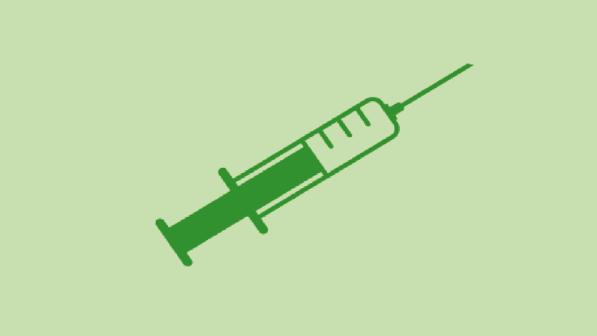In almost every industry, companies are taking sustainability seriously. If it was ever acceptable to think only about the needs of customers and shareholders, that narrow perspective is now deeply unfashionable. Business leaders know that they also need to look after the employees in their facilities, the communities in which they operate and the wider natural environment. Failure to do so has real consequences. Customers, investors and talent may walk away. Non-governmental organizations (NGOs) and protest groups may generate negative publicity or even disrupt operations. Governments and regulators are increasingly willing to impose onerous fines or even shut down non-compliant operations.
The sustainability imperative has also reached the life sciences and healthcare sectors. Pharmaceutical and medical device companies have always been able to claim that their work provides significant social benefits, perhaps reducing the imperative to take action on other sustainability fronts. Increasingly, however, the industry is recognizing that every organization has a responsibility to address the full spectrum of social and environmental impacts stemming from its activities. One area of particular focus for many is the issue of waste and pollution generated by the production, distribution and use of medical products.
Big pharma, big footprint
According to research by the non-governmental organization Healthcare Without Harm and consultancy Arup, the global healthcare industry is responsible for 4.4% of total greenhouse emissions. If healthcare were a country, it would be the world’s fifth-largest greenhouse gas producer. Around a third of those emissions are generated at the places where healthcare services are delivered. They come directly from the facilities and vehicles used by health service providers and indirectly from the energy that providers buy for heating, cooling and running equipment.
By far the largest source of emissions in global healthcare, however, is its supply chain: 71% of the sector’s contribution to global heating comes from the production, transport and disposal of pharmaceuticals, medical devices, hospital equipment and instruments.
Other research suggests that the industry has plenty of scope to reduce its supply chain emissions. Lotfi Belkhir and Ahmed Elmeligi at McMaster University in Ontario, Canada, calculated the carbon footprint of the 15 largest global pharmaceutical companies. Their paper, published in the “Journal of Cleaner Production,” found that the emissions intensity (a measure of carbon dioxide produced per unit of revenue) varied by a factor of five between companies of a similar size.
Deeper cuts
As is usually the case, environmental excellence requires stamina and commitment. Johnson & Johnson (J&J), one of the best performers in the McMaster University study, has included “Protecting the Environment and its Natural Resources” in its mission statement since the 1970s. The company has reduced its carbon emissions by 10% over the past decade and aims to cut them by 80% by 2050.
Some J&J facilities are already ahead of the curve. The plant in Helsingborg, Sweden, for example – where subsidiary McNeil AB manufactures smoking cessation products – is the first in the company’s global network to become carbon neutral across its manufacturing, warehousing and R&D facilities. Instead of burning natural gas to generate process steam, the plant now gets its thermal energy from the city’s district heating system, which runs on biogas generated from organic waste. In Beerse, Belgium, subsidiary Janssen Pharmaceuticals is set to be the first industrial site in Western Europe to use geothermal energy. The company is drilling a 2.5-kilometer-deep borehole to access hot water for use in space heating and manufacturing processes. Upon completion, the project is expected to reduce the site’s carbon emissions by 30%.
Lifecycle complexities
Switching to low- or zero-carbon energy sources is almost always a good thing, but other initiatives to improve environmental performance in life sciences may involve complex trade-offs. One common challenge faced by many companies in the sector is the choice between single-use and reusable devices and equipment. Single-use items generate large quantities of waste, but cleaning and reconditioning equipment for reuse can consume significant amounts of energy, water and chemicals. The “best” answer from a sustainability perspective can depend on a host of factors, including the distance devices must travel from manufacture to point of use and the availability of infrastructure for safe, efficient disposal or recycling of biohazardous materials.

GE Healthcare, which produces single-use manufacturing equipment for the biopharmaceutical sector, has conducted lifecycle analyses comparing the impact of its systems with conventional stainless-steel alternatives. The company says that single -use equipment uses significantly less energy and fewer raw materials and consumes 75% less water than conventional systems. GE notes, however, that transport emissions and the availability of low-carbon energy can have a big effect on the overall environmental impact of a biopharma manufacturing cell.
Novo Nordisk, which provides insulin products for the treatment of diabetes, is embracing circular economy principles in an effort to reduce, and ultimately eliminate, the negative environmental impact of its entire value chain. Near its insulin plant in Kalundborg, Denmark, the company has built a biogas plant that generates energy from the plant’s organic slurry waste and allows the residue material to be used as soil fertilizer. It is also working to reduce the plastic waste generated by its single-use injection pens. Waste plastic from production is already recycled, and Novo Nordisk is redesigning its products to enable customers to reuse or recycle more of their components.
Why go looking for the latest logistics stories and insights when you can have them delivered right to you?
Finding the best balance
Similar trade-offs are common when it comes to reducing the environmental impact of healthcare logistics activities. “Over the past three years, we’ve had a growing number of requests from life sciences customers to investigate sustainable packaging solutions,” says Pia Morbach, Regional Sourcing Manager (for temperature-controlled packaging) at DHL. “The first question you always have to determine is the customer’s priority, which might be to cut carbon emissions, or to reduce the consumption of plastic in the supply chain.”
Since many healthcare products need tight temperature control in transportation and storage, the sector makes extensive use of insulated packaging in its distribution networks. Expanded polystyrene (EPS) is the traditional solution here, providing an appealing combination of low cost, good thermal properties and light weight. As consumers and regulators turn against single-use plastic packaging, however, companies are looking for alternatives. “For healthcare applications, companies are looking at bio-based single-use insulation systems, such as cotton wadding,” says Morbach. “And there is a growing interest in returnable packaging, too.”
Making the switch to more sustainable packaging isn’t straightforward, she adds, noting that the bio-based, single-use solutions currently on the market can’t keep shipments cool for more than two days, a requirement for shipments that might need to wait three or four days for customs clearance. Returnable systems, such as those using lightweight vacuum insulation panels, offer very good thermal performance, but users need to factor in the cost, complexity and carbon emissions associated with the return journey. One possible solution here is the use of pooled container fleets, which can take loads from multiple shippers, reducing the need for empty return journeys. To date, these challenges – along with their higher upfront costs – mean sustainable packaging systems have found only niche roles in the healthcare supply chain. That role is expected to grow, however, as the industry looks for ways to help its most important patient: the planet. — Jonathan Ward
Published: June 2020
Images: Adobe Stock (2)






